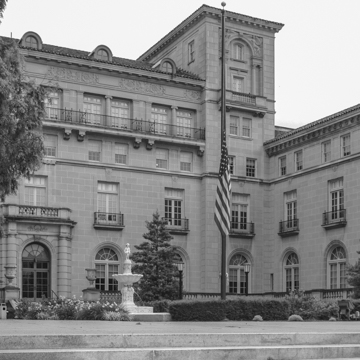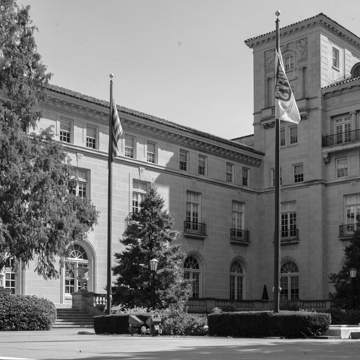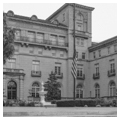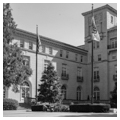C. Emlen Urban had designed Milton Hershey's stable in Lancaster in 1891 and appears to have advised Hershey at various times during the industrialist's career. This project began as a collaboration between the brilliant classicist Cret and Urban in 1916, but the entry of the United States into World War I and the resulting rise in steel prices caused Hershey to put the civic center with its theater on hold. Fifteen years later, in the depths of the Great Depression, Hershey took advantage of the drop in steel prices while also keeping his building crew employed by returning to the project. The resulting theater clad in limestone and with the appearance of a Florentine palazzo has none of the look of the American modern that had transformed theaters in the
You are here
Hershey Civic Center
1915–1916; 1929–1933, C. Emlen Urban and Paul P. Cret. 2–14 E. Chocolate Ave.
If SAH Archipedia has been useful to you, please consider supporting it.
SAH Archipedia tells the story of the United States through its buildings, landscapes, and cities. This freely available resource empowers the public with authoritative knowledge that deepens their understanding and appreciation of the built environment. But the Society of Architectural Historians, which created SAH Archipedia with University of Virginia Press, needs your support to maintain the high-caliber research, writing, photography, cartography, editing, design, and programming that make SAH Archipedia a trusted online resource available to all who value the history of place, heritage tourism, and learning.





